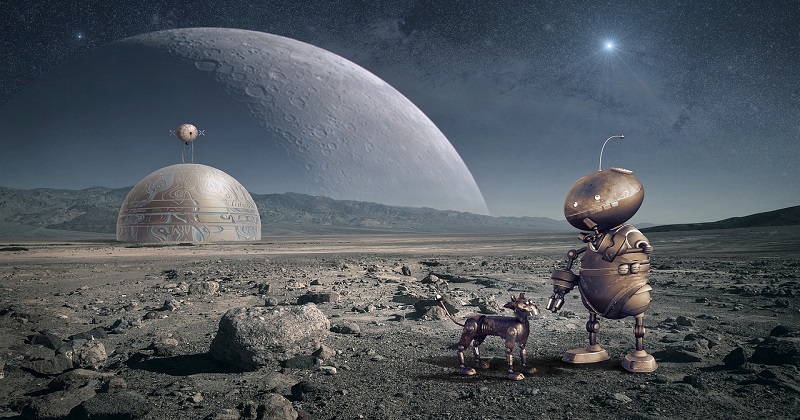 NASA is wanting to launch a test for a public and scientific network to plan a self-assembling robot with man-made artificial intelligence that can investigate the surface of the Moon, William Harris, CEO of Space Center Houston said Tuesday. Space Center Houston in the US, the official guest community for NASA Johnson Space Center, conducts standard open effort projects to draw in individuals of different ages and assorted foundations in logical research. These projects urge understudies and researchers to ideate inventive answers for issues that the US space organization is attempting to defeat with the end goal to complete effective space investigation missions.
NASA is wanting to launch a test for a public and scientific network to plan a self-assembling robot with man-made artificial intelligence that can investigate the surface of the Moon, William Harris, CEO of Space Center Houston said Tuesday. Space Center Houston in the US, the official guest community for NASA Johnson Space Center, conducts standard open effort projects to draw in individuals of different ages and assorted foundations in logical research. These projects urge understudies and researchers to ideate inventive answers for issues that the US space organization is attempting to defeat with the end goal to complete effective space investigation missions.
“The next challenge is for the Moon — it will be announced next year — to develop a self-assembling robot or rover on the Moon’s surface that has an artificial intelligence platform so it can make decisions based on what it is learning about the lunar surface,” Harris told in an interview with times now news.
“The reality is when we sent humans to the Moon back in the 1960s, just going there and coming back safely was a huge accomplishment. We did not do a huge amount of science during those missions,” he said. Most of the astronauts then were test pilots. The first and only scientist to have visited the Moon is Harrison Schmitt, an American geologist, who is now the last living crew member of Apollo 17, Harris said.
There was very little scope to perform scientific experiments, and to date, there is a lot we do not know about the Moon, he said. Nonetheless, the space travelers that NASA recruits currently are researchers. With designs in progress to take people back to the lunar surface, the US space office is chipping away at productive advancements that can help space explorers to lead logical analyses on the Moon.
In recent decades, evidence of frozen water beneath the surface of the Moon has emerged. This not only presents the possibility for the Moon to host some form of primitive life but also opens avenues for future astronauts to harvest water and set up a space colony. The water could also be broken down to provide hydrogen fuel, using which we could send missions into deeper space, Harris said.
“NASA has come to recognize that you can become too insular with your own team. So it is better to open up to the general public to see if somebody has ideas that can help us address different challenges,” he said. Harris gave a case of space robotics technology challenge previously, that expected to program NASA’s humanoid Valkyrie to perform human-like assignments.
“Within the group of ten semi-finalists, we had teams from two of the top universities. But the winner of the challenge was a stay-at-home dad, who came with his 6-year-old son,” said Harris. His answers are presently being utilized by NASA to program Valkyrie. Including general society along these lines can help space programs prosper and break new grounds, he said.
Harris was in New Delhi as a piece of a designation of delegates looking to reinforce ties with Indian organizations and to find out about the most recent advancements in the nation’s business condition and ventures like aerospace, human services, and data innovation.
